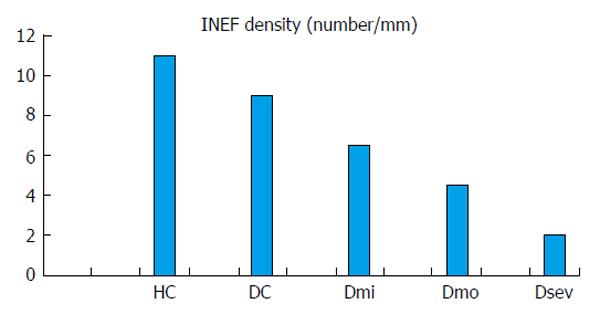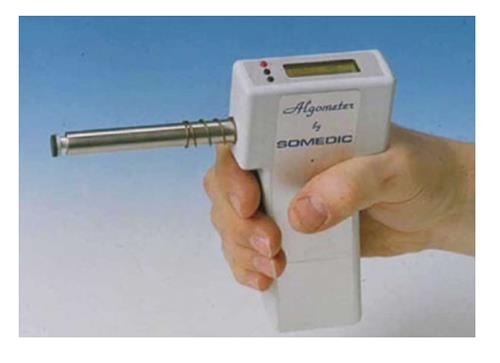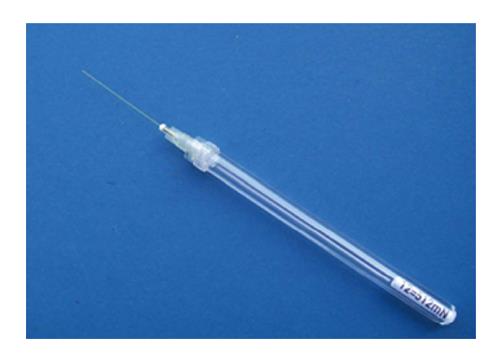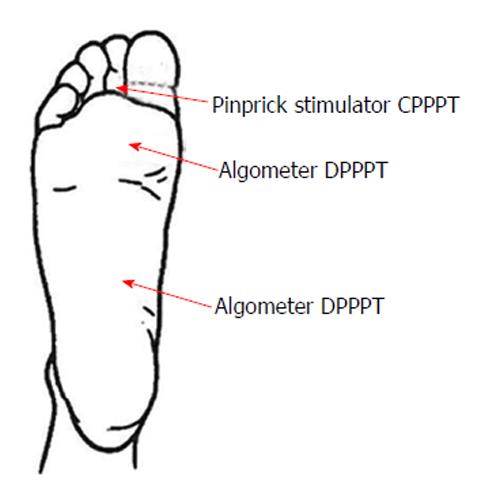Copyright
©The Author(s) 2015.
World J Diabetes. Apr 15, 2015; 6(3): 391-402
Published online Apr 15, 2015. doi: 10.4239/wjd.v6.i3.391
Published online Apr 15, 2015. doi: 10.4239/wjd.v6.i3.391
Figure 1 Sketch reproduced from Brand P[2].
Figure 2 Intraepidermal nerve fibre ending density at the lower limb in relation to severity of diabetic neuropathy (adapted from Quattrini et al[41]).
HC: Healthy controls; DC: Diabetic controls; Dmi: Mild SDN; Dmo: Moderate SDN; Dsev: Severe SDN; SDN: Symptomatic diabetic neuropathy; INEF: Intraepidermal nerve fibre ending.
Figure 3 MSA Thermotest® (electronic device, expensive!).
Figure 4 Algometer® (electronic device, expensive!).
Figure 5 MARSTOCKnervtest® PinPrick stimulator 512 mN (fibreglass, cheap!).
Figure 6 Pressure pain perception threshold measurements done in own studies[61].
CPPPT: Cutaneous pressure pain perception threshold; DPPPT: Deep pressure pain perception threshold.
Figure 7 Lowered pain perception thresholds (hyperalgesia) after acute skeletal trauma of the foot in 13 healthy control subjects (sprain, toe fracture) and in 12 diabetic foot patients (elective surgery) at the injured site.
Data are combined from ref. [59,61]. A: Cutaneous pressure pain perception threshold (mN) (pinprick) at plantar digital skinfold (medians); B: Deep pressure pain perception threshold (kPa) over metatarsophalangeal joint (medians); C: Deep pressure pain perception threshold (kPa) over musculus abductor hallucis (medians).
- Citation: Chantelau EA. Nociception at the diabetic foot, an uncharted territory. World J Diabetes 2015; 6(3): 391-402
- URL: https://www.wjgnet.com/1948-9358/full/v6/i3/391.htm
- DOI: https://dx.doi.org/10.4239/wjd.v6.i3.391















